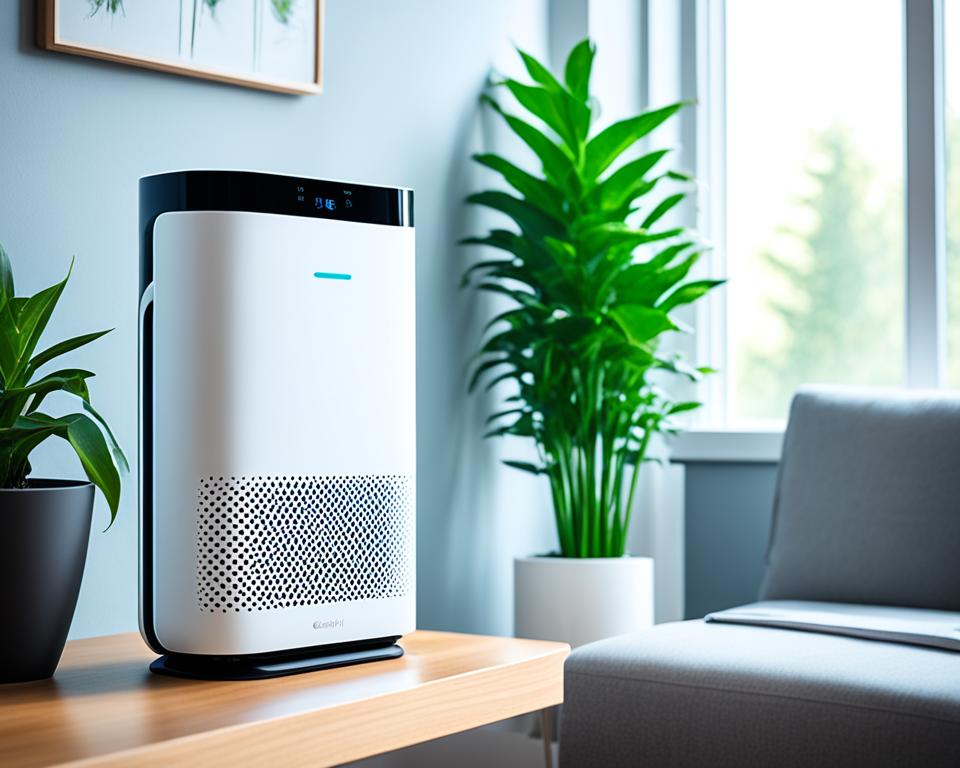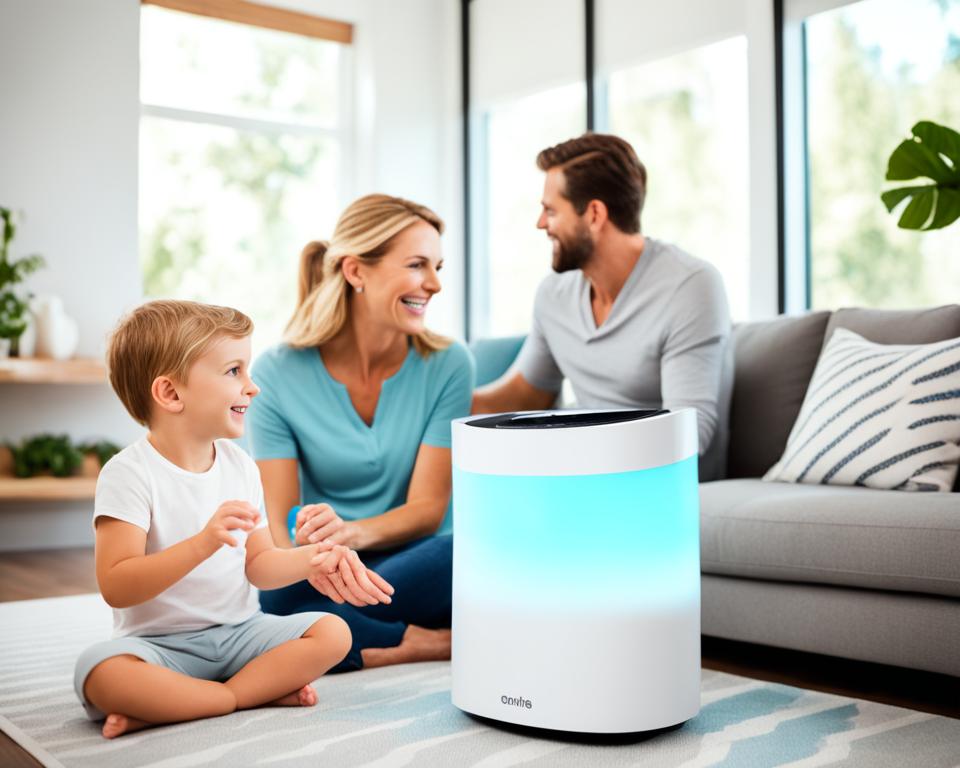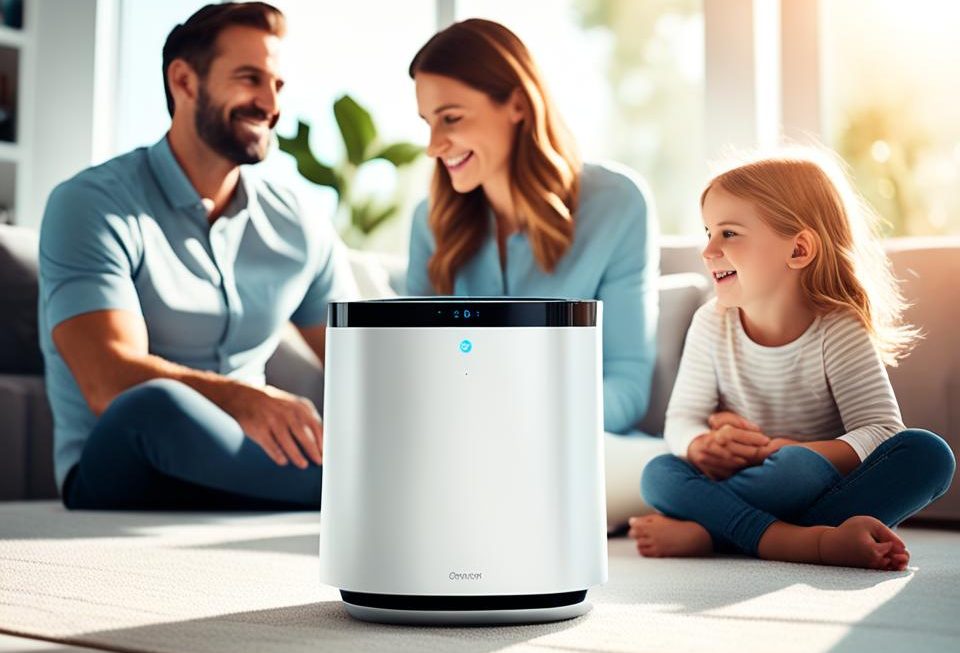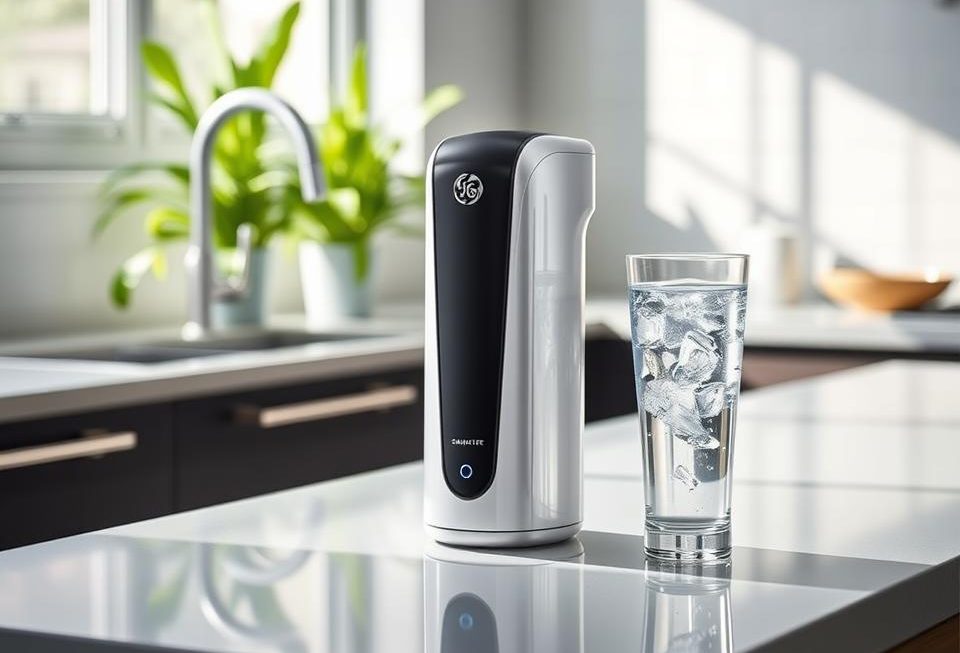Clean, fresh indoor air is essential for health and well-being. A house air purifier plays a crucial role in improving air quality by removing allergens, pollutants, and odors. These advanced filtration systems use HEPA (High-Efficiency Particulate Air) technology and other innovative filters to capture a wide range of airborne contaminants, delivering cleaner, healthier air throughout your home. By integrating smart controls and monitoring capabilities, modern house air purifiers offer a convenient and effective way to enhance indoor air quality and create a more comfortable living environment.
Read more interesting information at ::sportsnews1
Understanding House Air Purifiers
A house air purifier is a device designed to improve indoor air quality by removing various airborne pollutants, allergens, and odors. These house air purifiers work by drawing in air, passing it through a series of filters, and then releasing the cleaned air back into the room. The most common filter types used in these air purification systems are HEPA filters, which can capture up to 99.97% of airborne particles as small as 0.3 microns, as well as activated carbon filters that help remove odors and volatile organic compounds (VOCs).
How Do Air Purifiers Work?
House air purifiers work by pulling in contaminated indoor air, passing it through a series of filters, and then releasing the purified air back into the room. The HEPA filter is the primary component, designed to capture a wide range of airborne particles, including dust, pollen, pet dander, and other allergens. Activated carbon filters are often added to further remove odors, smoke, and volatile organic compounds (VOCs) from the air.
Benefits of Clean Indoor Air
Maintaining clean, healthy indoor air through the use of a house air purifier can provide numerous benefits. By removing allergens, pollutants, and odors, these devices can help alleviate allergy and asthma symptoms, improve respiratory health, and create a more comfortable living environment. Air quality monitors integrated into some air purifiers can also provide valuable insights into the air quality in your home, enabling you to make informed decisions about your air purification system.
Types of Air Purifiers
When it comes to improving indoor air quality, there are several types of house air purifiers available, each with its own unique features and capabilities. Understanding the differences between these technologies can help you choose the most suitable option for your specific needs.
HEPA Air Purifiers
HEPA (High-Efficiency Particulate Air) air purifiers are one of the most popular and effective options for house air purifier systems. These purifiers use a dense, pleated filter that can capture up to 99.97% of airborne particles as small as 0.3 microns, including allergens, dust, and other microscopic contaminants. HEPA air purifiers are particularly effective at improving indoor air quality by removing a wide range of pollutants from the air.
Activated Carbon Air Purifiers
Activated carbon air purifiers are designed to target gaseous pollutants and odors. These devices use a filter made of activated carbon, which is highly porous and adsorbs a variety of volatile organic compounds (VOCs), chemicals, and odors, effectively improving the overall air quality in your home. Activated carbon filters complement HEPA filters, providing a comprehensive purification solution.
Ionic Air Purifiers
Ionic air purifiers use electrical charges to attract and trap airborne particles, including allergens, dust, and smoke. These devices generate negatively charged ions that bind to positively charged particles, causing them to fall to the floor or adhere to nearby surfaces. While ionic air purifiers can be effective at allergen removal, they may produce a small amount of ozone as a byproduct, which can be a concern for some users.
Choosing the Right House Air Purifier
When selecting a house air purifier, it’s essential to consider several key factors to ensure it meets your specific needs. By understanding the importance of room size and coverage area, air quality monitoring, and proper filter replacement and maintenance, you can make an informed decision and invest in a house air purifier that will effectively improve the air quality in your living spaces.
Room Size and Coverage Area
One of the most crucial considerations when choosing a house air purifier is the size of the room or area you need to cover. Air purifiers are designed to cover specific square footage, and selecting a model that can effectively handle the dimensions of your space is crucial for optimal performance. Be sure to check the manufacturer’s recommended room size coverage to ensure the air purifier you choose can effectively circulate and clean the air in your desired living areas.
Air Quality Monitoring
Modern house air purifiers often come equipped with advanced air quality monitoring capabilities, allowing you to track the level of pollutants, allergens, and other airborne contaminants in your indoor environment. Look for models that feature built-in air quality sensors and real-time monitoring displays, as these features can help you better understand the air quality in your home and adjust the purifier’s settings accordingly.
Filter Replacement and Maintenance
The effectiveness of a house air purifier is largely dependent on the condition and performance of its filters. Be sure to research the recommended filter replacement schedule and maintenance requirements for any model you’re considering. Many manufacturers offer filter subscription services or reminders to ensure you stay on top of these essential maintenance tasks, which can help extend the lifespan of your air purifier and maintain optimal air quality in your home.
Top House Air Purifier Features
As homeowners seek to enhance their indoor air quality, modern house air purifiers offer a range of advanced features that can improve performance, energy efficiency, and user-friendliness. From smart controls and automation to quiet operation, these innovative technologies are transforming the way we manage our home environments.
Energy Efficiency
Energy efficiency is a crucial consideration when selecting a house air purifier, as these devices can contribute significantly to a home’s energy consumption. Advancements in motor and fan technology, combined with optimized airflow design, have resulted in air purifiers that operate with greater energy efficiency, reducing both environmental impact and utility costs. Many models now feature Energy Star certification, ensuring they meet rigorous standards for energy-efficient performance.
Smart Controls and Automation
The integration of smart controls and automation capabilities has revolutionized the way we interact with our house air purifiers. Homeowners can now monitor and adjust their air purification system through intuitive mobile apps or voice commands, allowing for seamless control and optimization of indoor air quality. These advanced features often include real-time air quality monitoring, scheduled operation, and remote access, empowering users to maintain a healthier living environment with greater convenience and efficiency.
Quiet Operation
The noise level of an air purifier is an important factor, especially in bedrooms or living areas where a peaceful atmosphere is desired. Advancements in motor and fan design have resulted in house air purifiers that operate with remarkably low noise levels, often below 50 decibels even on the highest setting. This quiet operation ensures that the air purification process does not disrupt daily activities or disturb occupants, contributing to a more comfortable and relaxing indoor environment.
Allergen and Pollutant Removal
One of the primary functions of a house air purifier is to remove a wide range of airborne allergens and pollutants, including:
- Pollen, dust, and pet dander – These common household allergens can trigger reactions in those with allergies or asthma. House air purifiers equipped with HEPA filters are highly effective at capturing these microscopic particles.
- Smoke, chemicals, and volatile organic compounds (VOCs) – Airborne pollutants from sources like smoking, cleaning products, and off-gassing furniture can degrade indoor air quality. Air purifiers with activated carbon filters help neutralize these contaminants.
- Mold spores and bacteria – Excess moisture can promote the growth of harmful microorganisms in the home. House air purifiers can remove these biological pollutants, improving overall air quality improvement.
By effectively removing these allergens and pollutants, a high-performance house air purifier can create a healthier, more comfortable living environment, benefiting those with respiratory sensitivities or simply seeking cleaner indoor air.
Setting Up Your House Air Purifier
Proper placement and positioning of your house air purifier are crucial for ensuring optimal performance and air quality improvement throughout your living space. Follow these key considerations to set up your house air purifier for maximum efficiency:
Placement and Positioning
Choose a central location in the room where the house air purifier can effectively circulate the air. Avoid placing it in corners, behind furniture, or near windows and doors, as these areas may restrict airflow and reduce its effectiveness. Ensure the house air purifier is positioned at least a few feet away from walls to allow for proper air intake and circulation.
Consider the size of the room and the recommended coverage area for the house air purifier you’ve selected. Larger rooms may require a more powerful unit or the placement of multiple house air purifiers to maintain consistent air quality throughout the space.
Initial Setup and Configuration
Carefully follow the manufacturer’s instructions for the initial setup and configuration of your house air purifier. This typically includes tasks such as removing any protective packaging, inserting the filters correctly, and powering on the device.
Many modern house air purifiers offer smart controls and automation features that allow you to customize the settings to suit your preferences. Familiarize yourself with the various fan speeds, timer functions, and air quality monitoring capabilities to optimize the house air purifier‘s performance and efficiency.

By carefully considering the placement, positioning, setup, and configuration of your house air purifier, you can ensure that it operates at its full potential, delivering clean, fresh air throughout your home.
house air purifier
A house air purifier is a vital component in maintaining a healthy and comfortable indoor environment. These advanced filtration systems are designed to remove a wide range of airborne contaminants, including allergens, pollutants, and odors, delivering cleaner, fresher air throughout your living spaces.
The latest house air purifiers utilize cutting-edge technologies, such as HEPA (High-Efficiency Particulate Air) filters and activated carbon, to effectively capture a vast array of airborne particles and impurities. By drawing in air, passing it through these robust filtration systems, and then releasing the purified air back into the room, these devices play a crucial role in improving indoor air quality and creating a healthier, more comfortable home environment.
Investing in a high-quality house air purifier can provide numerous benefits, including:
- Reduced exposure to allergens, such as pollen, dust mites, and pet dander
- Elimination of airborne pollutants, including volatile organic compounds (VOCs) and smoke
- Effective removal of unpleasant odors, leaving your home with a fresh, clean scent
- Improved overall air purification system and indoor air quality for better respiratory health
By incorporating a house air purifier into your home, you can take a proactive step towards creating a healthier, more comfortable living space for you and your family. These advanced filtration systems are designed to work seamlessly, offering a convenient and effective solution for enhancing indoor air quality and promoting well-being within your home.
Maintaining Your Air Purifier
Ensuring the longevity and optimal performance of your house air purifier requires regular maintenance and upkeep. Two key aspects of this process are filter replacement and general cleaning.
Filter Replacement Schedule
The frequency of filter replacement will depend on factors such as the usage, room size, and air quality in your home. As a general guideline, it’s recommended to replace the house air purifier filters every 6 to 12 months, or as per the manufacturer’s instructions. Regularly replacing the filters ensures your air purifier continues to effectively remove allergens, pollutants, and other contaminants from the air, maintaining the desired level of indoor air quality.
Cleaning and Upkeep
In addition to filter replacement, cleaning your house air purifier is essential for its proper functioning and longevity. This typically involves wiping down the exterior surfaces, vacuuming the air intake grills, and following any other cleaning recommendations provided by the manufacturer. Proper maintenance and upkeep will help ensure your air purifier continues to operate efficiently, providing you with clean, fresh air for years to come.
By adhering to a regular filter replacement schedule and maintaining the overall cleanliness of your house air purifier, you can ensure its continued effectiveness in improving your indoor air quality and creating a healthier living environment.
Air Purifiers for Specific Needs
House air purifiers can be tailored to address a variety of indoor air quality challenges, providing targeted solutions for specific needs and concerns. Whether you’re seeking relief from asthma and allergies, managing the effects of pet dander, or aiming to remove stubborn odors and smoke, there are air purifier models designed to cater to your unique requirements.
Asthma and Allergy Relief
For individuals with asthma or severe allergies, a house air purifier equipped with high-efficiency particulate air (HEPA) filters can be a game-changer. These advanced filters are capable of capturing up to 99.97% of airborne allergens, such as pollen, dust mites, and pet dander, effectively reducing the triggers that can exacerbate respiratory issues and allergy symptoms.
Pet Owners
Households with pets often face the challenge of managing pet-related odors and allergens. Fortunately, specialized house air purifiers designed for pet owners incorporate additional filtration layers, such as activated carbon filters, to effectively remove pet dander, hair, and stubborn odors, creating a cleaner, fresher indoor environment for both you and your furry companions.
Smoke and Odor Removal
Whether you’re dealing with lingering cigarette smoke, cooking odors, or other persistent scents, house air purifiers with advanced filtration capabilities can provide a solution. These models often feature a combination of HEPA and activated carbon filters to capture airborne particles and neutralize a wide range of volatile organic compounds (VOCs) and unpleasant odors, ensuring a more pleasant and inviting living space.

Integrating with Smart Home Systems
The latest generation of house air purifiers is designed to integrate seamlessly with smart home systems, offering enhanced convenience and control over your indoor air quality. By connecting your house air purifier to a central automation hub or voice-controlled assistant, you can now manage your air purification needs with the simple press of a button or voice command.
This smart home integration allows you to monitor and adjust the settings of your house air purifier remotely, whether you’re at home or away. You can schedule the device to operate at specific times, change fan speeds, or even initiate a deep cleaning cycle to ensure your indoor air is always fresh and purified.
Moreover, some advanced house air purifiers can seamlessly integrate with other smart home devices, such as air quality monitors, to provide a comprehensive indoor air quality management system. This integration enables you to receive real-time alerts on air quality, triggering your air purifier to automatically adjust its settings to maintain optimal indoor air quality.
The ability to control your house air purifier through voice commands or mobile app interfaces further enhances the convenience of maintaining healthy indoor air. With just a few taps or voice instructions, you can ensure that your living spaces are always filled with clean, purified air, even when you’re not physically present.
Overall, the integration of house air purifiers with smart home systems represents a significant advancement in the quest for better indoor air quality and overall home automation. By leveraging these innovative technologies, you can effortlessly manage your air purification needs and enjoy a more comfortable, healthier living environment.
Air Purifier Buying Guide
When shopping for a house air purifier, it’s important to consider a variety of features and factors to ensure you select the most suitable model for your needs and budget. From key performance specifications to energy efficiency and smart controls, the right air purifier can make a significant difference in improving your indoor air quality and overall living comfort.
Features to Look For
As you explore the market, keep an eye out for house air purifiers with the following key features:
- HEPA filtration – Highly efficient at trapping 99.97% of airborne particles as small as 0.3 microns, including allergens, dust, and pet dander.
- Activated carbon filters – Effectively remove odors, volatile organic compounds (VOCs), and other gaseous pollutants.
- Air quality monitoring – Integrated sensors that track and display real-time air quality data, allowing you to monitor the effectiveness of the air purifier.
- Smart controls and automation – WiFi connectivity, mobile app integration, and automatic adjustments based on air quality for hands-free convenience.
- Quiet operation – Look for models with low noise levels to maintain a peaceful indoor environment.
- Suitable room coverage – Ensure the air purifier’s coverage area matches the size of the space you need to purify.
Budget Considerations
When it comes to selecting a house air purifier, the budget is an important factor to consider. Prices can range from affordable entry-level models to more premium, feature-rich options. As you evaluate your options, keep the following in mind:
- Upfront cost – Balancing your budget with the features and performance you require is crucial. Don’t sacrifice quality for a lower price tag.
- Ongoing operating costs – Factor in the cost of replacement filters and energy consumption, as these can significantly impact the long-term ownership costs.
- Warranty and support – Look for models that offer comprehensive warranties and reliable customer support to ensure your investment is protected.
By carefully considering the key features and your budget, you can find the house air purifier that best suits your needs and helps create a healthier, more comfortable indoor environment.
Air Purifier Myths and Facts
When it comes to house air purifiers, there are several common myths and misconceptions that can lead to confusion and misinformed purchasing decisions. It’s important to separate fact from fiction to ensure you make an informed choice.
| Myth | Fact |
|---|---|
| Air purifiers can eliminate all indoor air pollution. | While house air purifiers are highly effective at removing a wide range of airborne contaminants, they cannot eliminate all sources of indoor air pollution. Sources like building materials, furniture, and cleaning products can still contribute to poor air quality. |
| Air purifiers are only for those with allergies or respiratory issues. | In reality, air purification benefits everyone by improving overall indoor air quality, regardless of specific health concerns. Clean, purified air can enhance comfort and well-being for all occupants. |
| Ionic air purifiers are better than HEPA filters. | HEPA (High-Efficiency Particulate Air) filters are considered the gold standard in air purification, capable of removing up to 99.97% of airborne particles as small as 0.3 microns. Ionic purifiers have their own advantages, but they are not necessarily superior to HEPA technology. |
| House air purifiers require constant filter replacement. | While regular filter replacement is essential for maintaining optimal performance, modern house air purifiers can often operate for extended periods before needing new filters, depending on usage and indoor air quality conditions. |
By understanding these myths and facts about house air purifiers, you can make a more informed decision and ensure that your investment in an air purification system delivers the desired results for your indoor air quality needs.
Future of Air Purification Technology
The field of house air purifier technology is rapidly evolving, with manufacturers and researchers continuously pushing the boundaries of innovation. As we look towards the future, several exciting advancements and trends are emerging in the air purification technology market, promising even cleaner, more efficient, and more user-friendly solutions for indoor air quality.
One of the key trends is the integration of advanced sensor technology and smart controls into house air purifiers. These intelligent systems can not only monitor real-time air quality but also adapt their performance automatically, optimizing filtration and airflow to ensure optimal indoor air purity. This level of automation and responsiveness is set to revolutionize how homeowners manage their indoor environments.
Another exciting development is the emergence of innovative filter technologies, including materials that can capture an even wider range of airborne contaminants, from ultrafine particles to volatile organic compounds (VOCs). These advanced filters, combined with enhanced airflow designs, are poised to deliver unprecedented levels of air purification, catering to the needs of health-conscious consumers and those with specific air quality concerns.
As the house air purifier market continues to evolve, we can also expect to see increased focus on energy efficiency and sustainability. Manufacturers are exploring ways to reduce power consumption and minimize the environmental impact of these devices, ensuring that homeowners can enjoy cleaner air without sacrificing their eco-friendly values.



